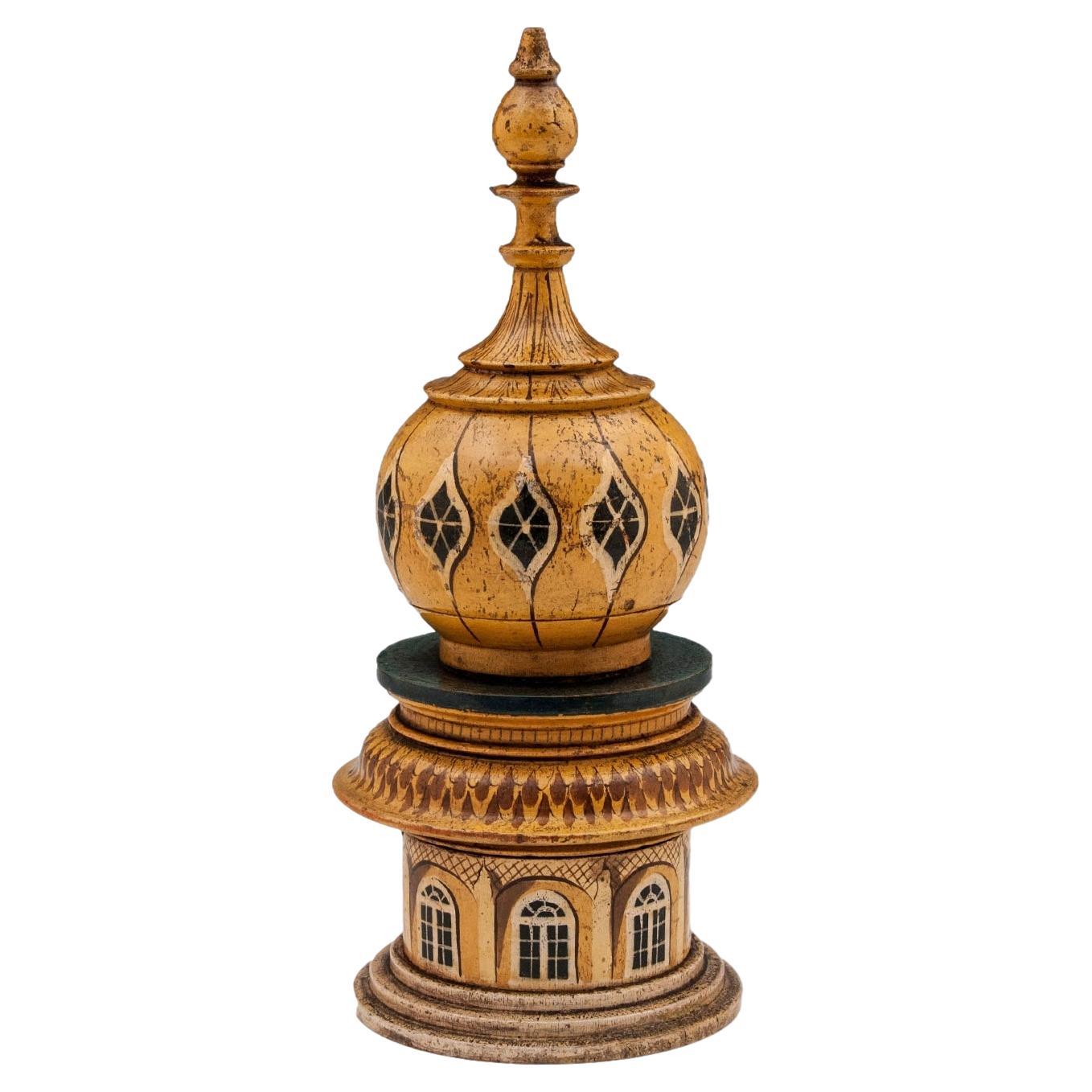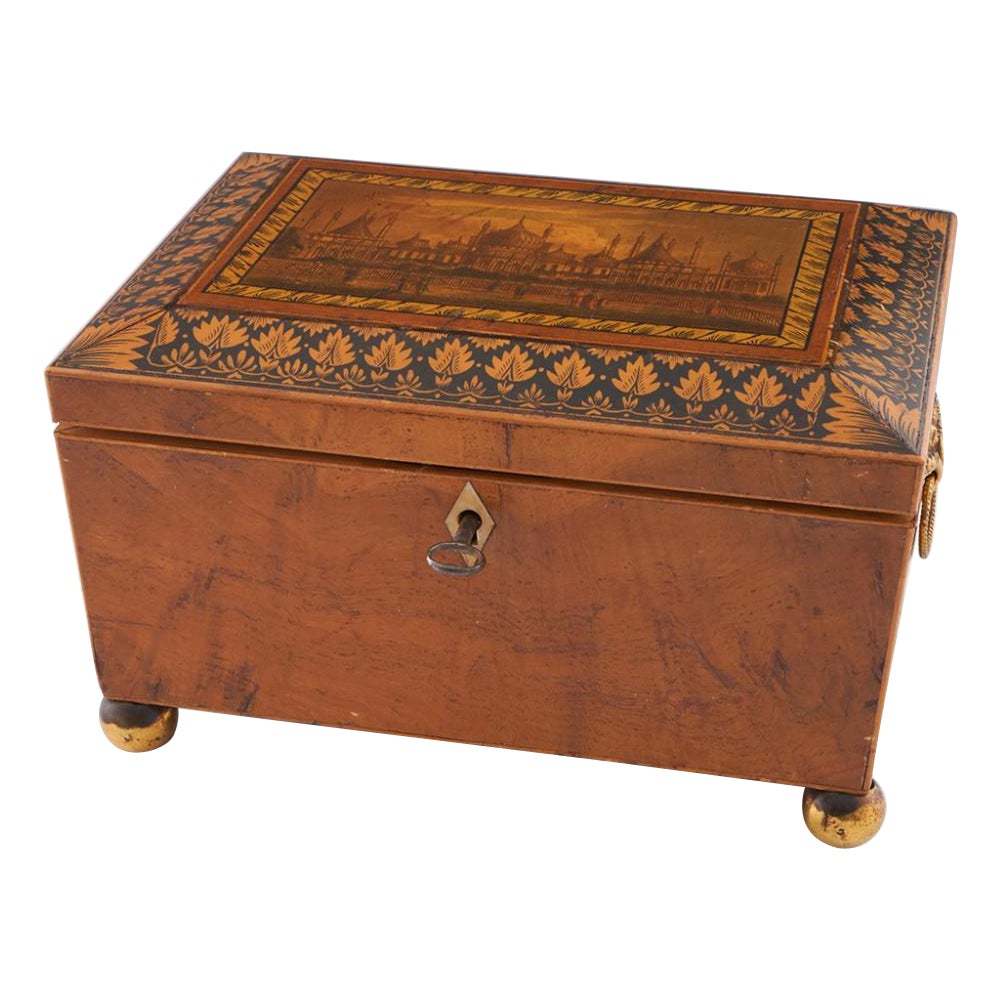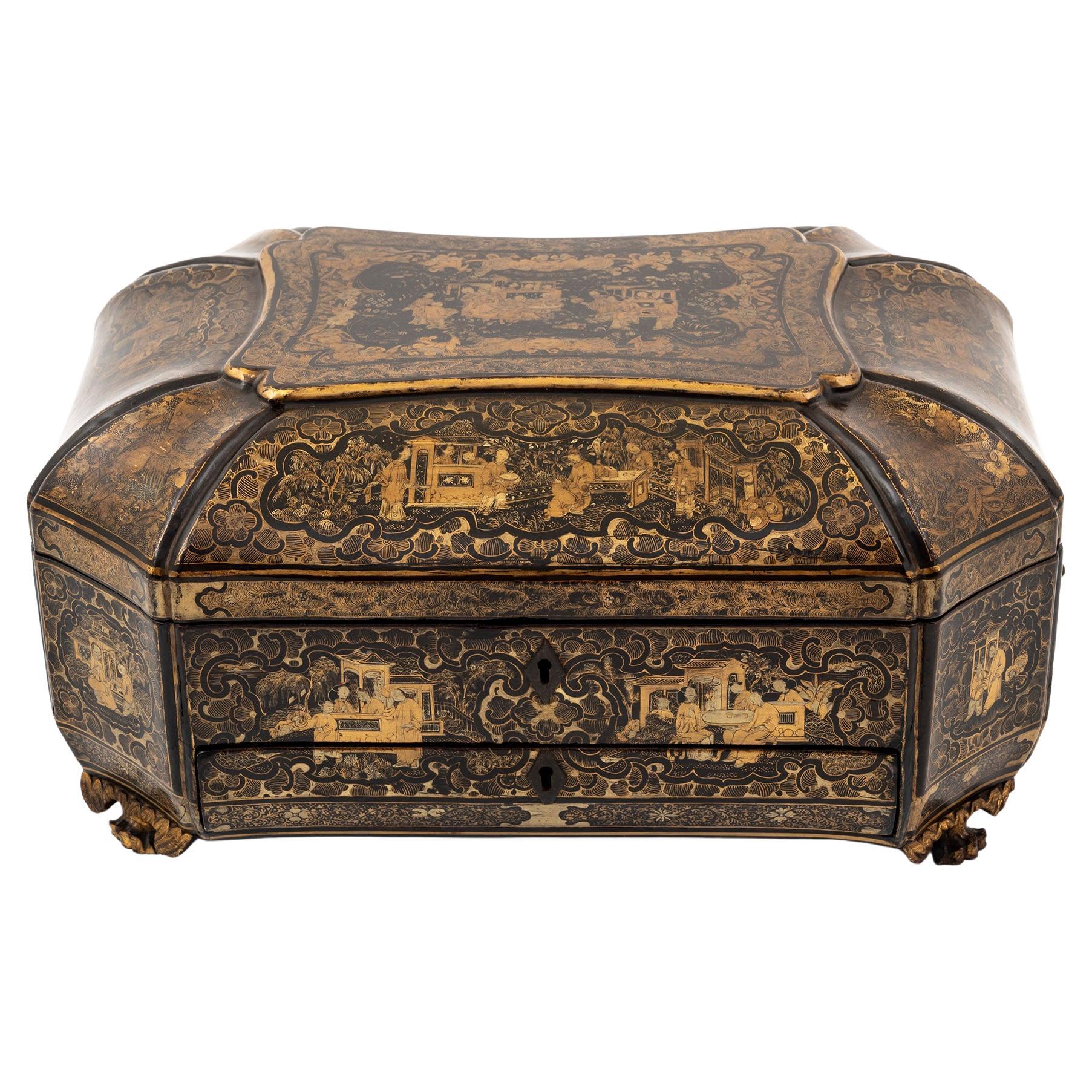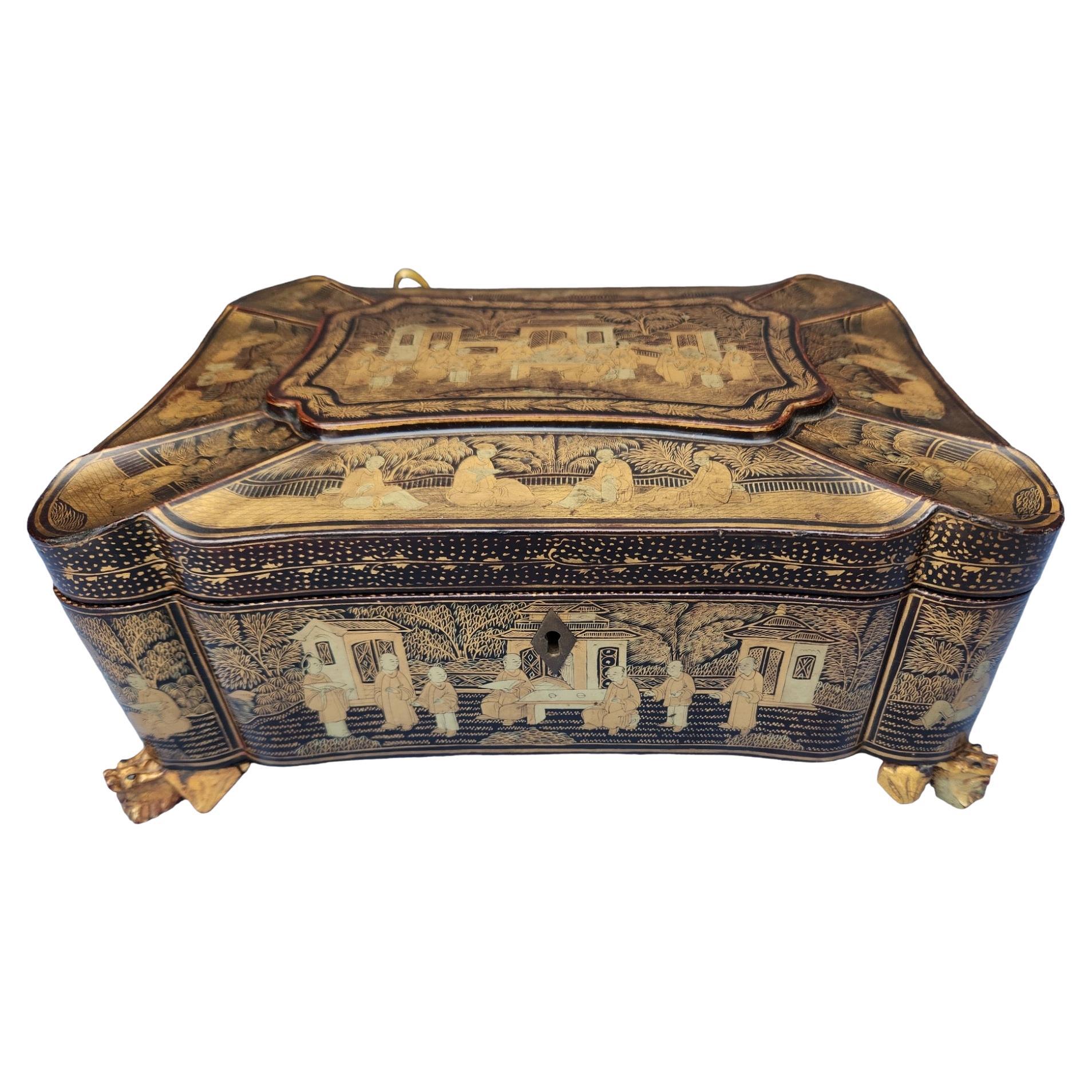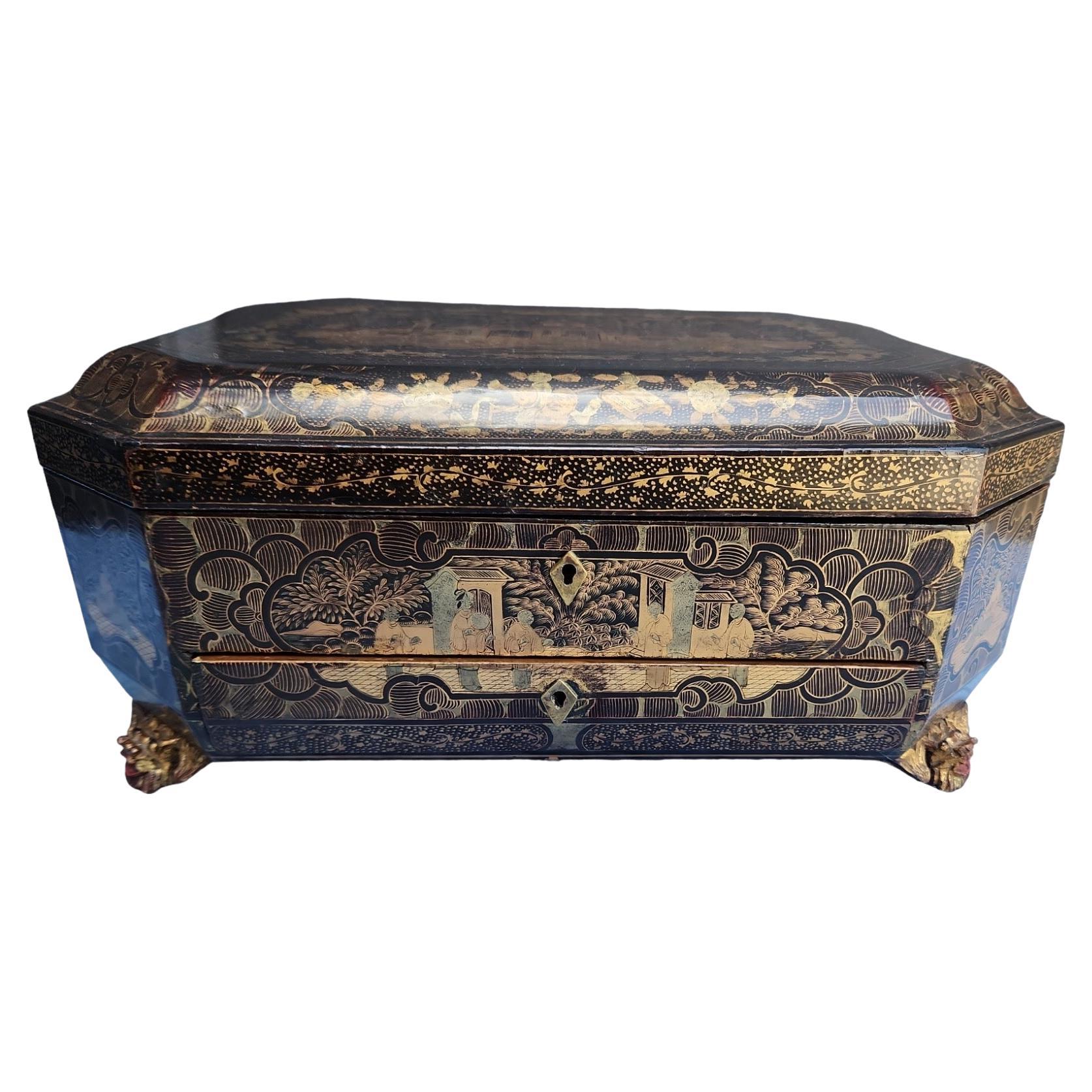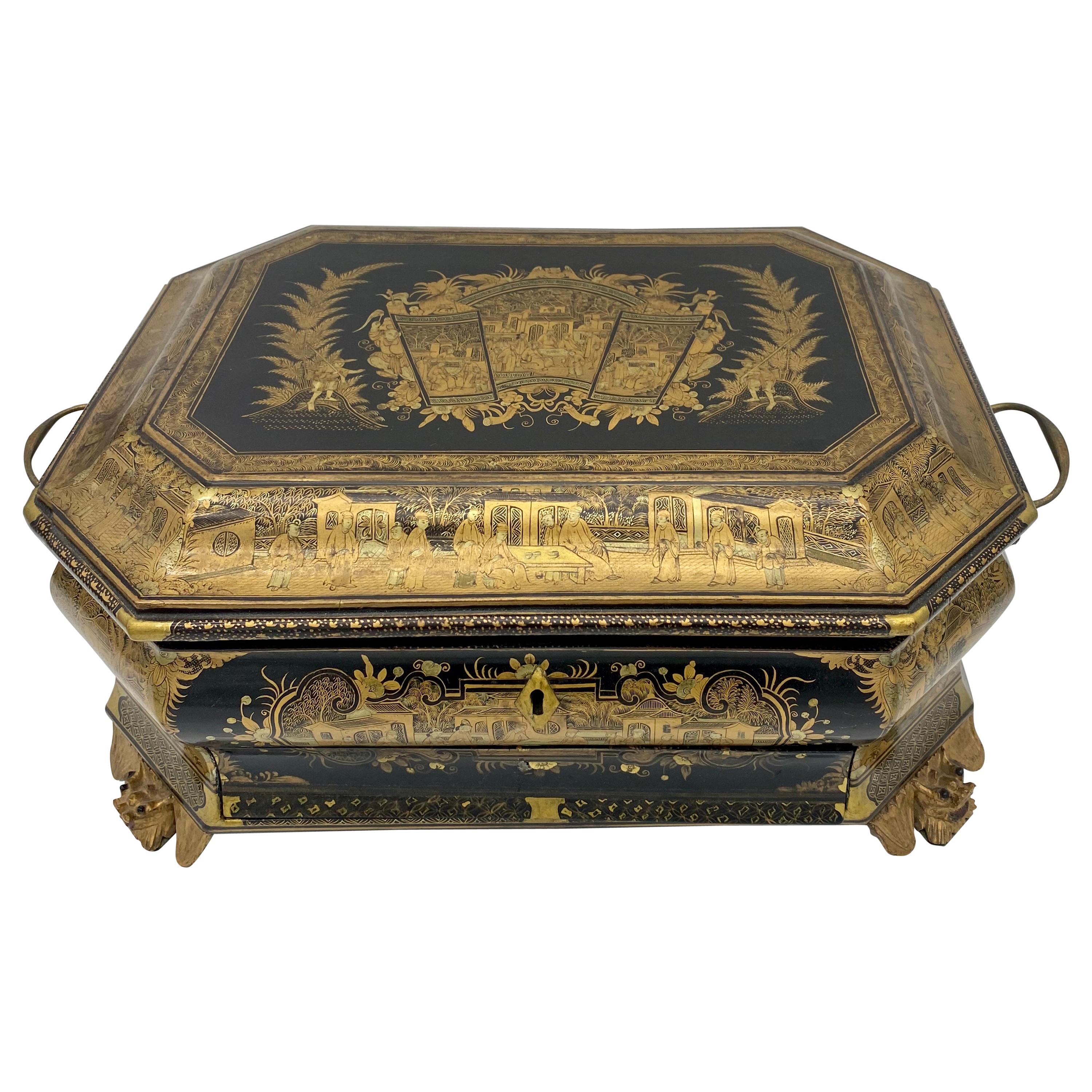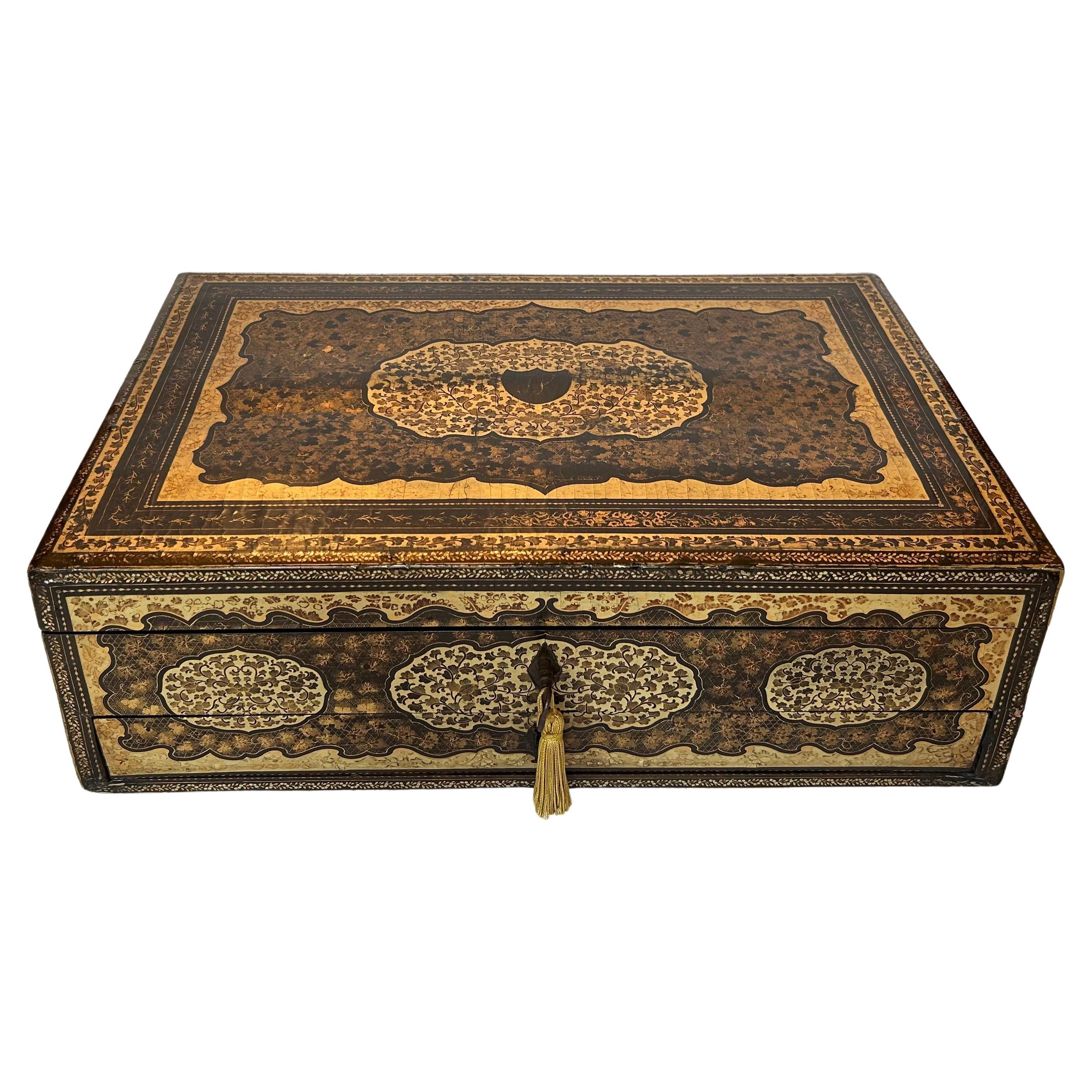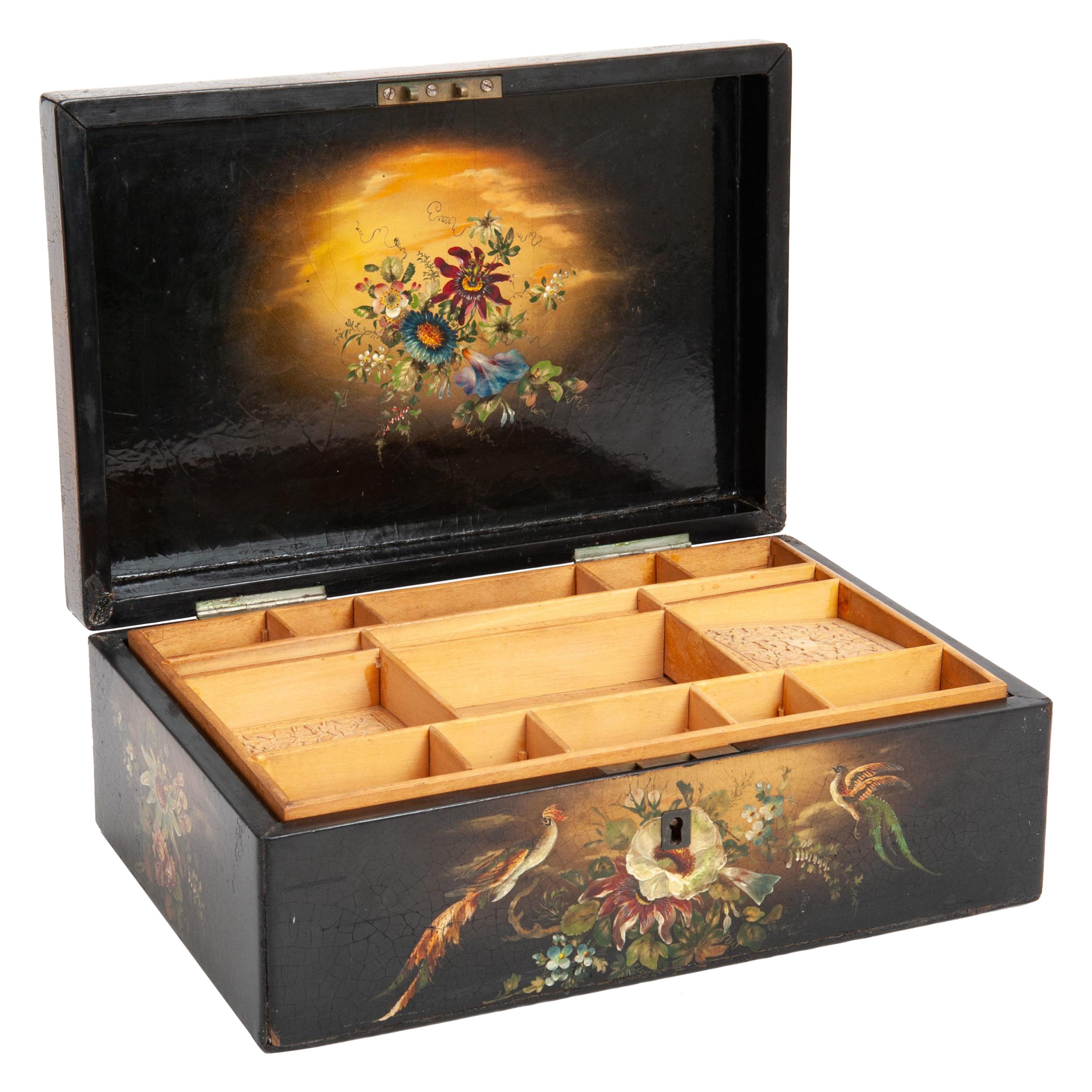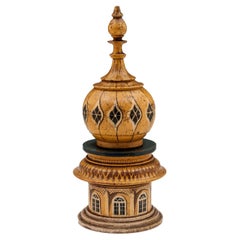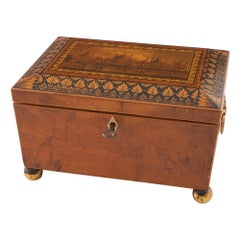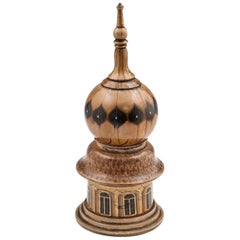
Antique Brighton Pavilion Sewing Compendium, 19th Century
View Similar Items
1 of 9
Antique Brighton Pavilion Sewing Compendium, 19th Century
About the Item
- Dimensions:Height: 9 in (22.86 cm)Diameter: 3.5 in (8.89 cm)
- Style:George IV (Of the Period)
- Materials and Techniques:
- Place of Origin:
- Period:
- Date of Manufacture:circa 1825
- Condition:
- Seller Location:Northampton, GB
- Reference Number:1stDibs: LU970412551591
You May Also Like
- Brighton Pavilion Tunbridge Ware Sewing CompendiumBy Tunbridge WareLocated in Northampton, GBRare Tunbridge Ware Form Sewing Compendium From our Tunbridge Ware collection, we are delighted to offer this very rare Tunbridge Wear Sewing Compendium. The Sewing Compendium modelled as a tower from the Brighton Pavilion features the iconic minaret turned in Sycamore (aka white wood) and a large globular body with hand-painted details leading to further turned faces and the hand-painted windows upon a stepped base. The Sewing Compendium opens in two locations one just below the first dome revealing a pin cushion and the second just above the windows revealing the Sewing tools including a Tunbridge Ware thimble and bobbin. The Tunbridge Ware Sewing Compendium dates to the Georgian era during the reign of George IV circa 1825. Brighton Pavilion, The Royal Pavilion and surrounding gardens are a Grade I listed property and were the former Royal residence located in Brighton, England. It was built in 1787 in three stages as a seaside retreat for George, Prince of Wales who became the Prince Regent in 1811 and then King George IV in 1820. It is built in the Indo-Saracenic style prevalent in India for most of the 19th century. The current appearance of the Pavilion which has various domes and minarets, is the work of architect John Nash, who extended the building starting in 1815. George IV's successors William IV and Victoria also used the Pavilion but Queen Victoria decided that Osborne House should replace the Pavilion as the royal seaside retreat and therefore the Pavilion was sold to the city of Brighton in 1850. Indo-Sarascenic refers to a cross between Indian architecture and Muslim architecture. Minarets means beacon in Arabic. In Islamic religious architecture, the tower from which the faithful are called to prayer five times each day by a muezzin, or crier. Such a tower is connected to a mosque and has one or more balconies or open galleries. The inspiration for the minarets features on the Brighton Pavilion are in homage to these types of finials. John Nash (1752-1835) was one of the most prevalent British architects from the Georgian and Regency periods. He was responsible for the design, in the neoclassical and picturesque styles of many important areas of London. He was financed by the Prince Regent and by the era's most successful property developer, James Burton. Nash's most famous designs were the Brighton Pavilion, Marble Arch and Buckingham Palace. Sycamore is a member of the Maple family, found in Europe. It is light yellow in colour and is often a very clean wood, with a straight, fine grain. The wood is often pippy. However, these pips are usually a very similar colour to the rest of the wood making them hardly visible. Georgian, a period in British history dating from 1714-1837, the Georgian era after the Hanoverian kings George I, George II, George III and George IV. Tunbridge Ware Tunbridge Wells and Tunbridge in Kent, England became popular in the 17th Century for their therapeutic waters. By the 18th century, Tunbridge Wells was a hugely popular Spa resort. Shops and stalls were set up to sell local work of distinction to visitors as souvenirs. Many of the original boxes were decorated with all sorts of different kinds of designs. Many of the Tunbridge boxes...Category
Antique Early 19th Century British George IV Decorative Boxes
MaterialsWood, Sycamore
- Tunbridge Ware - An Early Sewing Box with Mounted Brighton Pavilion Print, c1820Located in Tunbridge Wells, GBTunbridge Ware - An Early Sewing Box with Mounted Brighton Pavilion Print, c1820 Additional Information: Heading: Tunbridge Ware - An Early Sewing Box with Mounted Brighton Pavilion...Category
Antique 19th Century English George IV Decorative Boxes
MaterialsElm
- 19th Century Antique Chinese Sewing BoxLocated in Northampton, GBThis Antique Sewing box is octagonal-shaped with a rolled top, it features a hinged lid whilst standing on four carved winged Dragon's feet. The border on this Sewing Box is beautifully decorated with intricately worked foliate gilt borders and it shows various scenes of Chinese figures in pavilion gardens. The chinoiserie gold decoration adorns the exterior of the piece with decorative scenes of small Chinese figures in pavilion gardens. The interior houses a removable tray with eighteen compartments containing various bone sewing supplies. Two compartments in the interior have lids that match the beautiful chinoiserie decoration on the exterior of the box. There is a lockable drawer at the front of the box which contains six compartments. In one of the boxes, the lid is hinged and beautifully decorated to complement the box's exterior. An elegant tasselled key that operates a fully operational lock is included with this wonderful Chinoiserie Sewing Box.Category
Antique Mid-19th Century Chinese Decorative Boxes
MaterialsLacquer
- 19th Century Georgian Sewing BoxLocated in Pymble, NSWA good shaped sewing box of tooled leather with finely cast brass fittings. Stands on lion's paw feet. The leather is a deep burgundy colour with some minor chipping to corners. The ...Category
Antique 1810s British George III Decorative Boxes
MaterialsLeather, Wood
- 19th Century English Games Compendium SetLocated in London, GBThe domed case constructed in a well marked Coromandel, with protective brass guard strips, having a rising and lockable lid and a gated front, with a Satinwood interior, revealing t...Category
Antique 19th Century English Victorian Games
MaterialsBrass
- 19th Century Chinoiserie Sewing BoxLocated in Los Angeles, CAGreat condition for its age. No major losses or damage. Has original sewing pieces inside.Category
Antique Mid-19th Century Afghan Chinoiserie Decorative Boxes
MaterialsBone, Wood, Lacquer, Paint

